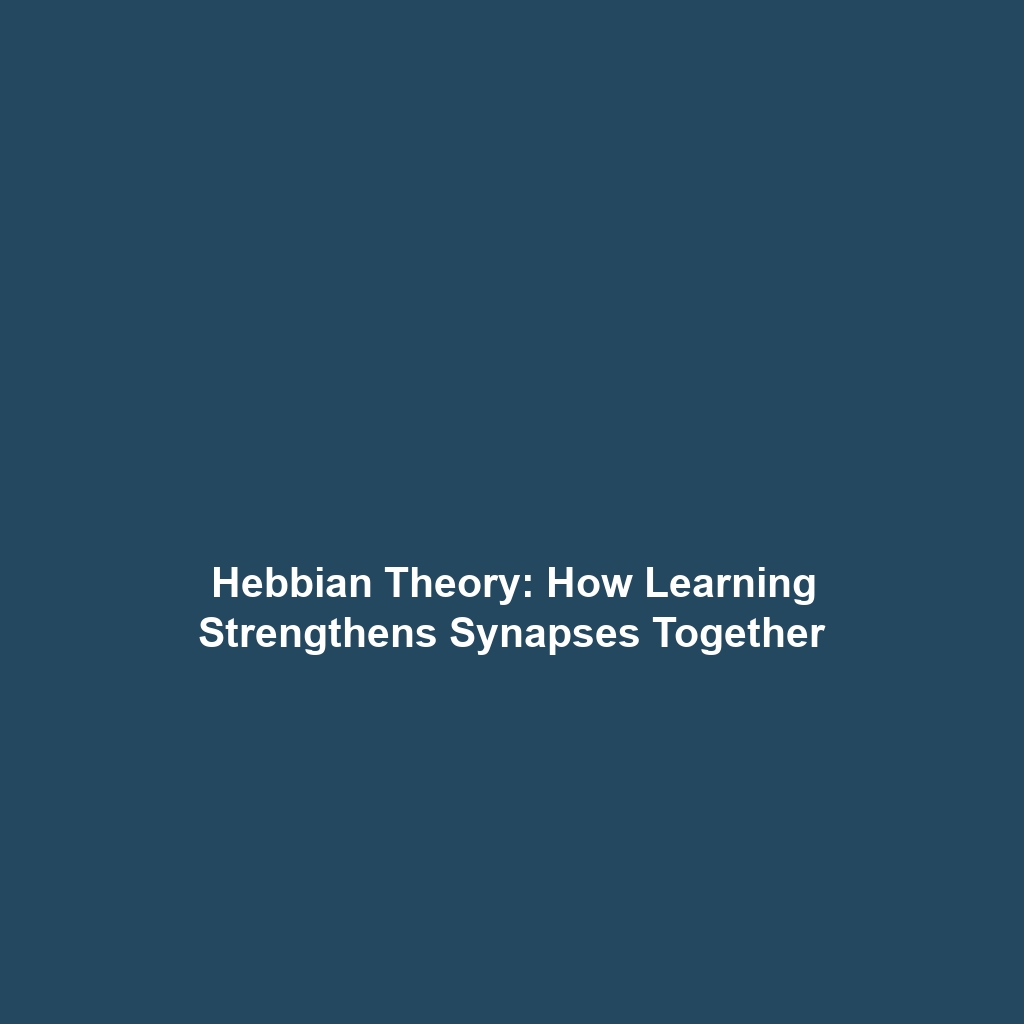Hebbian Theory: “Cells That Fire Together Wire Together” in Biomechanics
Hebbian theory, often summarized as “cells that fire together wire together,” is a fundamental concept in neuroscience that highlights the relationship between synaptic activity and learning. This theory is highly significant within the broader context of biomechanics, as it provides insights into how neural connections strengthen through repeated activation. Understanding this principle is essential in studying motor development, neuroplasticity, and the intricacies of biomechanical movement.
Key Concepts of Hebbian Theory
Hebbian theory posits that synaptic connections can be strengthened when presynaptic and postsynaptic neurons are activated simultaneously. This section delves into its major principles:
- Synaptic Plasticity: Synaptic connections can adapt in response to activity. Repeated activation leads to changes in efficiency and strength.
- Neurotransmission: The release of neurotransmitters at synapses plays a crucial role in establishing connections between neurons.
- Learning Mechanisms: The theory underscores the physiological basis of learning behaviors and skills, essential for biomechanical applications.
Applications and Real-World Uses
Hebbian theory has significant real-world applications in the field of biomechanics. Its principles contribute to advancements in various domains:
- Motor Skills Acquisition: Understanding how synapses strengthen during learning informs training techniques for athletes.
- Rehabilitation: Techniques that leverage Hebbian principles can enhance recovery strategies for individuals after neurological injuries.
- Robotic Movement: Insights from Hebbian theory are applied in developing bio-inspired robotics that adapt based on their “learning” experiences.
Current Challenges in Hebbian Theory
Despite its contributions, Hebbian theory faces several challenges within biomechanics:
- Complexity of Neural Networks: The intricacies of biological neural networks make it difficult to apply Hebbian principles uniformly.
- Variability in Learning Models: Different individuals exhibit varying learning responses, complicating standard applications.
- Limitations in Measurement: Accurately quantifying synaptic changes remains challenging, impacting our understanding of biomechanical implications.
Future Research and Innovations
The future of Hebbian theory research is promising, particularly concerning its implications for biomechanics. Upcoming innovations include:
- Enhanced Neuroimaging Techniques: Advanced imaging may provide deeper insights into synaptic changes during motor learning.
- Integrative Models of Learning: Developing comprehensive models that incorporate Hebbian principles with other learning theories.
- Neuromorphic Engineering: Designing circuits that mimic neural processes to improve robotic movement and adaptive systems.
Conclusion
Hebbian theory, encapsulated by the phrase “cells that fire together wire together,” offers profound insights into synaptic strengthening during learning and its relevance to biomechanics. As we continue to explore the applications, challenges, and breakthroughs associated with this theory, it remains critical for advancements in fields ranging from rehabilitation to robotics. For more information on how neuroscience intersects with biomechanics, visit our other articles on neuroplasticity and motor learning.

